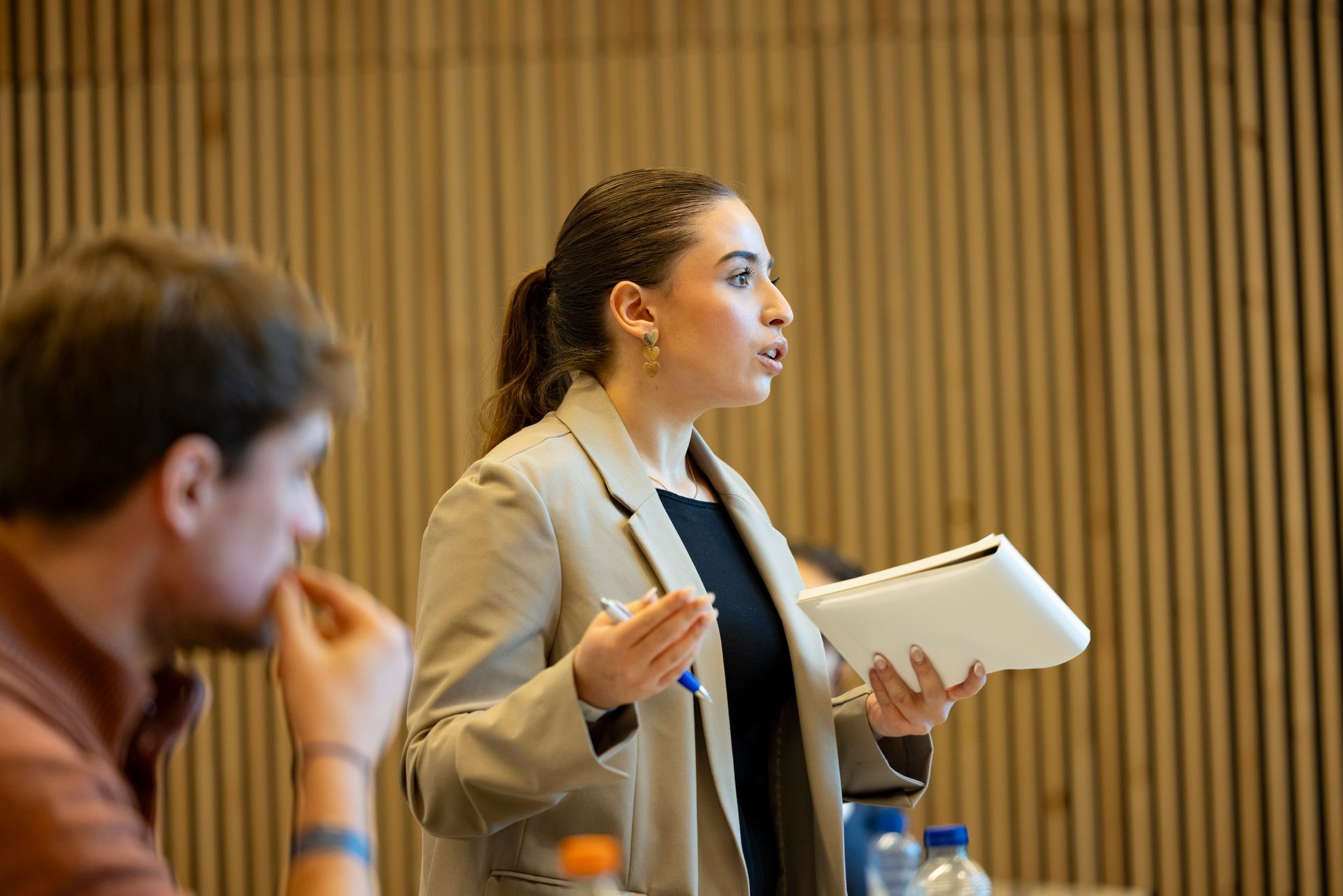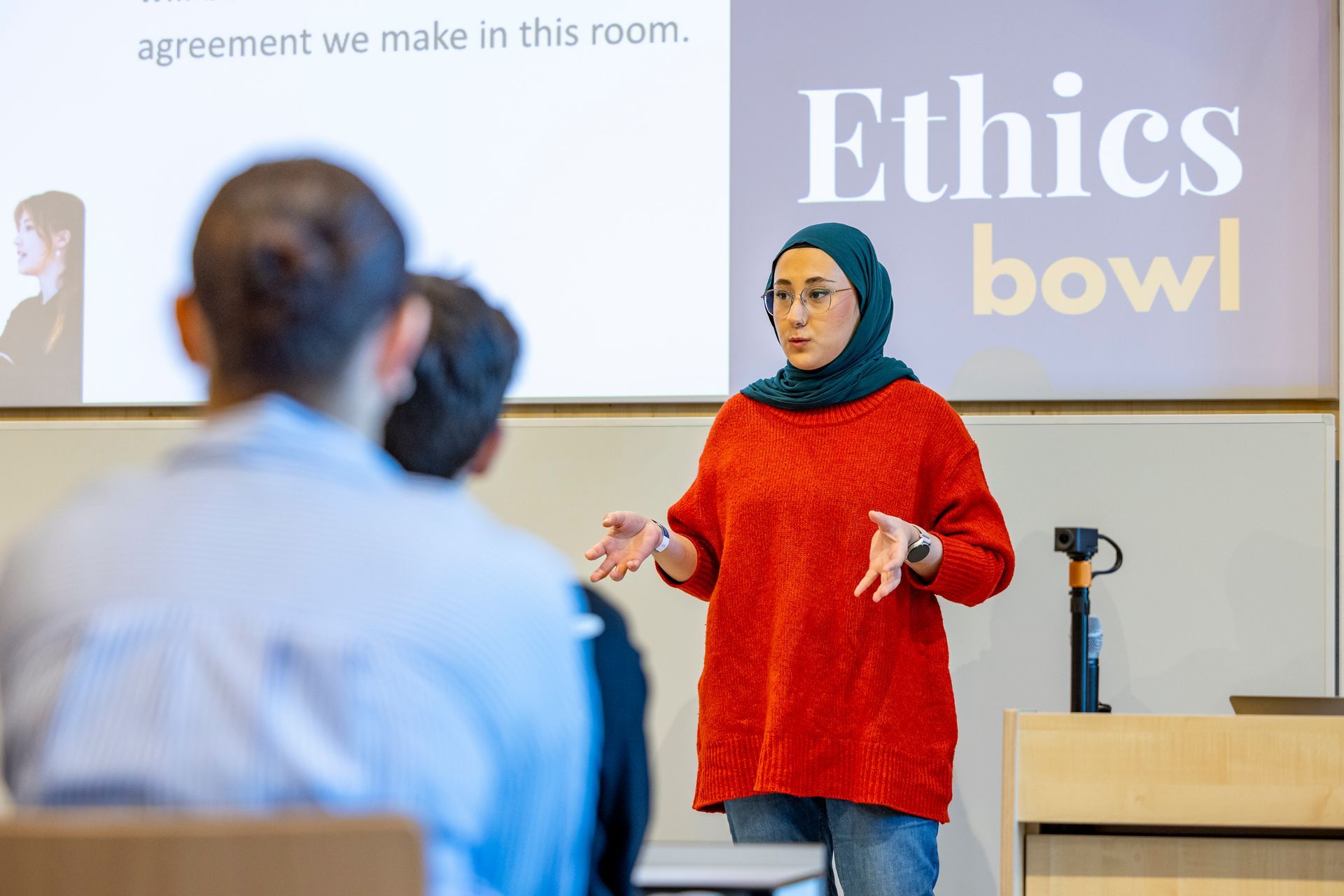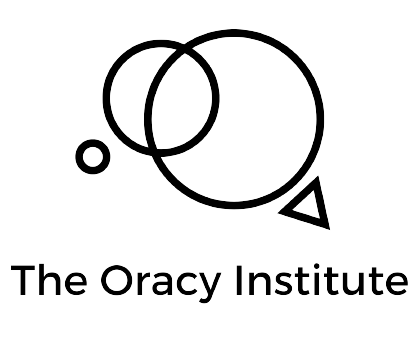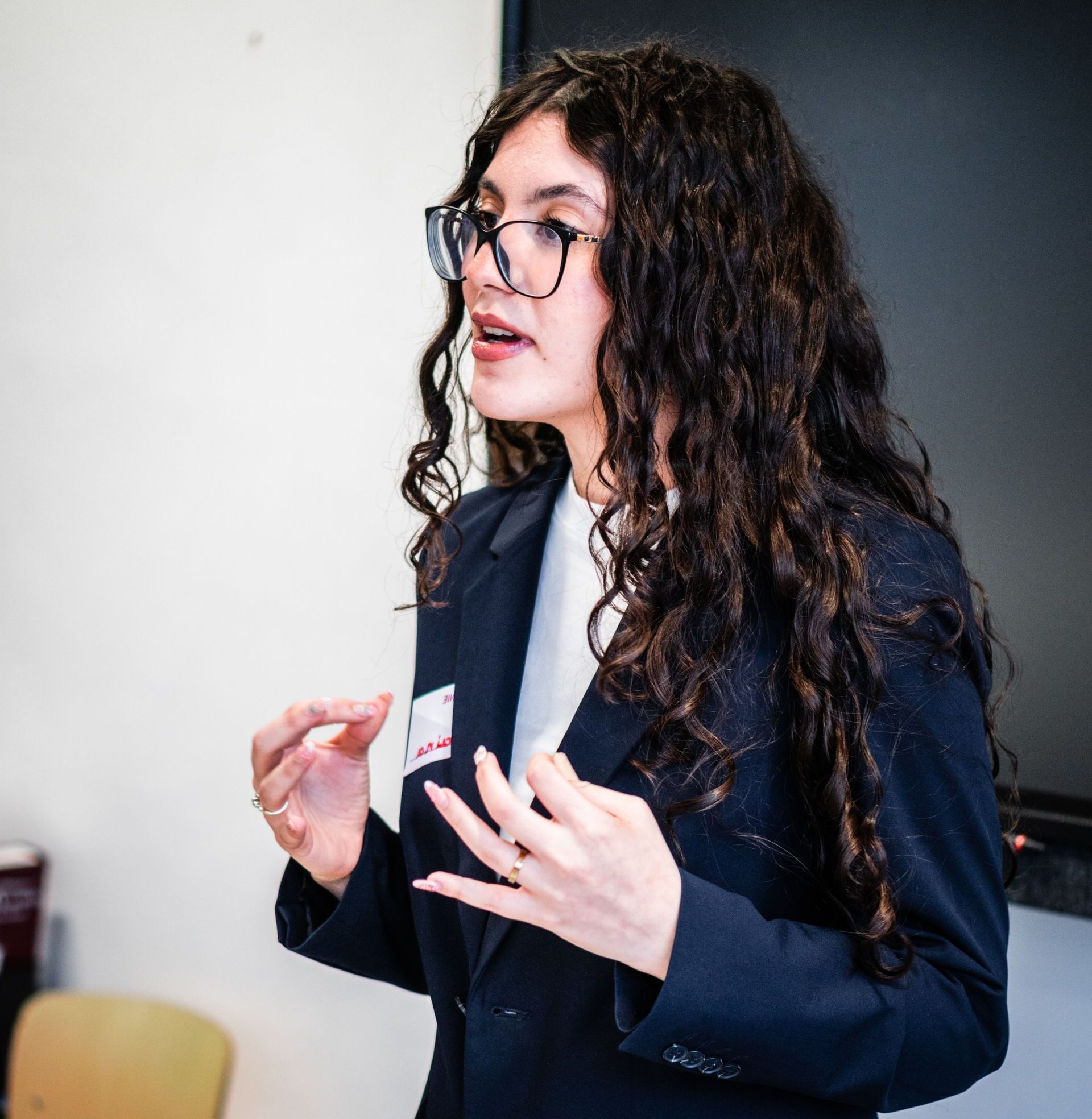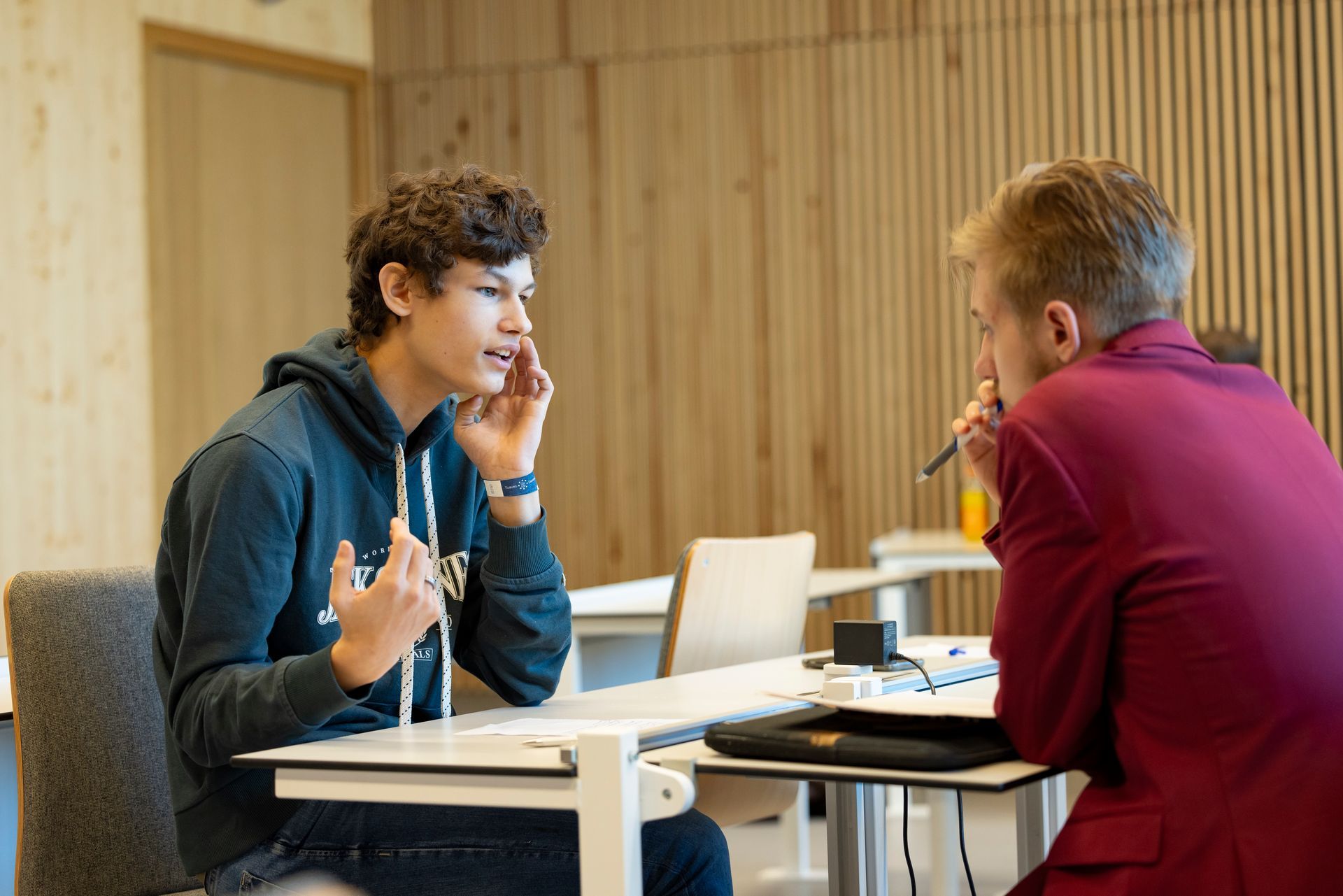Listen, Think, Speak,
Lead.
Critical thinking, clear communication, and analytical skills are more relevant than ever in a world where all human knowledge is just a click away. We believe that learning to analyse and present ideas effectively builds confidence that lasts a lifetime.
What we do? We’ve grown a background in competitive debating into an organisation that takes a skills-based, outcome-driven approach on teaching oracy. We advise on curriculum changes, develop lessons and teaching materials, coach debate clubs, organise events ranging from tournaments to speaking contests, and work on making all of this widely accessible.
Our team of highly experienced trainers—winners of titles from Oxford to Chennai—has helped thousands of students, in both Dutch and English, become more confident, persuasive speakers.
Interested in what we can do for you?
Take a look at our projects—and don’t hesitate to get in touch.
2500+
students that have used our materials
350+
teachers trained in how to implement oracy-based activities
2
books published
Take a look at some of our projects
Oracy Curriculum & Debate Club
At the RISS we have developed the three year RISS Rose Oracy programme and in doing so dedicated ourselves to making oracy a permanent part of the curriculum for all RISS students. All students from grades 6, 7 and 8 receive have received top-notch oracy education from our experienced trainers.
Additionally we've been training the debate club for years and together, we launched the International Schools Debating League (ISDL), a tournament promoting English-spoken debate events for students.
Young Minds Academy
Young Minds Academy (YMA) is a summer camp designed for ambitious and socially engaged youths, aiming to inspire personal growth and societal contribution. Participants will engage in activities such as debates, workshops on democracy—including politics, the rule of law, news, and media—and skill development sessions focusing on critical thinking and active citizenship. The camp emphasizes forming connections with like-minded peers and learning from experienced professionals in fields like politics, journalism, and business. Notably, the camp is offered free of charge, providing an accessible opportunity for youths to develop their talents and make a positive societal impact.
IDAC: EU online course platform
As part of an EU-funded project, we've developed an innovative online platform for debate courses. The Innovate Debate: Applied Curriculum for Debate-based Youth Work (IDAC) project promotes an interactive approach to learning, helping young people develop essential skills in critical thinking and communication. These online courses are designed to make debate education accessible to everyone, and cover all the fundamental skills needed to start debating - from argumentation to rebuttal and beyond.
KBS Onder de Bogen
We don't just collaborate with high schools - we also have a longstanding partnership with the KBS Onder de Bogen primary school. We started by teaching a single class, but now we're thrilled to be teaching four and counting!
We're exploring new opportunities to develop debate activities for developmentally advanced students. At Onder de Bogen, we're dedicated to cultivating critical thinking skills and empowering young learners to express themselves with confidence and clarity.
The Culture Connect Project
In the heart of Rotterdam, a hyperdiverse city where more than 170 nationalities converge, a unique tapestry of cultures is woven. Did you know that over half of Rotterdam's residents are not born to parents of Dutch origin?
We have started exploring this diversity at the Rotterdam International Secondary School (RISS). Many international school students are also known as Third Culture Kids, individuals who have grown up in cultures different from their parents'. These are the stories we want to celebrate and share.
This is why this year we introduced The Culture Connect Project (TCCP) – an exciting journey that invites students to explore their own cultural experiences and stories. What does culture mean to each of us? Where do we find our sense of belonging? How do we get our story across?
Ethics Bowl with Tilburg University
In collaboration with Tilburg University, we co-organised the first Dutch edition of the Ethics Bowl—a unique debate format where students explore ethical dilemmas through thoughtful dialogue rather than opposition. Teams from diverse backgrounds tackled topics like AI, sustainability, and political representation. Ahead of the event, participants received training from national debate champions to sharpen their argumentation and critical thinking skills.
What is Oracy?
About us

We're passionate about empowering students with the skills they need to succeed in school and in life. Our competitive debating background has taught us valuable skills that have helped us in all aspects of life, from personal relationships to professional success.
We believe that every student can benefit from developing skills in argumentation, presentation, and critical thinking. That's why we're dedicated to making these skills accessible to everyone. After having won more than 40 national and international titles, we decided to start building experience in other analytic and didactic disciplines. Since then, we've established debate clubs, developed and taught oracy and debate programs, and created a variety of study materials designed to help you become a confident and effective communicator, regardless of your background or experience level.
We don't just teach you how to win debates - we teach you how to actively listen, analyze complex issues, and think critically. These skills will help you succeed not only in school but also in your personal and professional life.
The Team

Devin van den Berg
World Debate Championships Semi Finalist
Dutch National Debate Champion (4x)
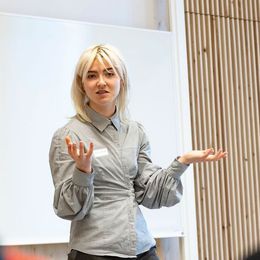
Mare van den Putte
Dutch National Debate Champion
Former member Team Netherlands

Anna Cox
#1 Best Debater NL (2023-present)
Best European Speaker at World Championships 2021

Dina Gijswijt
Former member of national debate selection

Lotte van Abbema
Project manager and Oracy coach

Roos Zijlstra
Former member Team Netherlands

Daan Koning
Former member Team Netherlands

Merijn Everstein
Coach Dutch Schools Debate College
Former part of national debate selection
Do you want to join the team?
Joining the Oracy Institute means you'll have the opportunity to contribute to young people acquiring lifelong skills while also developing your own. Do you have affinity with teaching? Are you good at engaging young students? Are you looking for a fun and inspiring part-time job?
Please send us a message or email at info@oracyinstitute.com.
Why people believe in us

From day one, the students at my school were able to understand why oracy matters not only for their school results but also for their experiences outside of the classroom. They were taught many useful speaking skills ranging from how to pace one's speech and how to project one's voice to more complicated ones such as how to introduce a topic to capture the listener's attention to effectively and persuasively structure a 3-minute presentation.
Diana van Adrichem, RISS

The Oracy Institute has given a series of debate lessons at our school. It was great to see how the coach, with her enthusiasm and knowledge, was able to motivate the students to speak. In the seven weeks I saw an enormous progress in speaking, argumentation and reaction skills. I would 100% recommend these classes!
Lorna Wijma, ISK Zaanstad

The debate club at Wolfert Bilingual has been run by the Oracy team for several years now, and we are very proud of the individual growth students show there, as well as the successes the Wolfert Debate Society achieves at tournaments outside of school.
In addition, Oracy provides debate lessons at school to classes in the lower and upper grades. It is always great to see how the people of Oracy, in an enthusiastic and didactically excellent way, manage to motivate the students to speak in front of the class and argue points of view; skills that are often not practiced enough in 'regular' lessons. Oracy's lessons are an important addition to our curriculum.
Caroline Gaultier,
Wolfert Tweetalig

My students have been taught what is not self-evident for ISK students (newcomers who not only have to learn the language but also the Dutch manners): to share their opinion, even with a teacher. They have learned how to give their opinion, not through emotion, but through logic, with good arguments. As one of them said: “If you remain calm, you can do it all.” It turned out that these students, who have only been in the Netherlands for around a year, managed to win a debate from students of the HAVO. I am a proud teacher. Now, I suddenly have to justify all sorts of things all the time; they ask a lot of critical questions these days.
Brigitte van Meurs, ISK Zaanstad
Blogs
